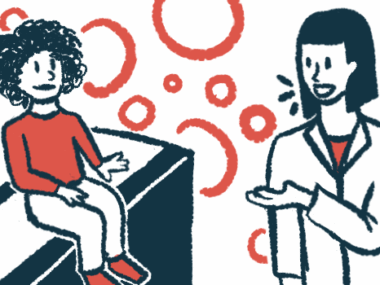Girl with AADC deficiency thriving after Kebilidi treatment
3-year-old given gene therapy as a baby has 'new life,' father says
Written by |

Doctors at Boston Children’s Hospital say the gene therapy Kebilidi (eladocagene exuparvovec-tneq) can be life-changing for people with aromatic L-amino acid decarboxylase (AADC) deficiency, as was the case for a girl treated there.
When the girl went in for gene therapy treatment as a baby in 2023, she wasn’t able to hold up her head — a sign of the severe motor impairment that’s a common symptom of AADC deficiency. Within months of treatment, she was able to control her head and took her first steps. She is now thriving at age 3, according to a news story from Boston Children’s.
“Watching her thrive has been nothing short of miraculous,” the girl’s father said. “The procedure didn’t just give our daughter a new life — it gave us one, too.”
Phillip Pearl, MD, a clinician at Boston Children’s who has overseen the girl’s care, said there “aren’t words to express how effective [Kebilidi] was in this case.”
AADC deficiency is caused by mutations in the DDC gene, which is needed to make certain neurotransmitters (signaling molecules that nerve cells use to communicate with each other and the rest of the body). Low neurotransmitter levels ultimately lead to AADC deficiency symptoms. Kebilidi, developed by PTC Therapeutics, is designed to deliver a healthy copy of the DDC gene to brain cells, facilitating normal neurotransmitter production to ease disease symptoms.
‘Transformational’ therapy could lead to others targeting brain disorders
“AADC is one of the most severe disorders we treat,” said Pearl, who is co-director of Boston Children’s Epilepsy Center and has worked as an investigator on clinical trials of Kebilidi. “But these children don’t just improve, they reach milestones no one thought possible: head control, sitting up, speaking, even walking. This targeted gene therapy, administered directly into the brain, has been one of the most transformational experiences of my career, especially after having followed children with this devastating condition over the past 20 years.”
Kebilidi is administered directly into the brain via a surgical procedure using a specialized device called the SmartFlow Neuro Cannula. Boston Children’s researchers including Pearl and neurosurgeon Scellig Stone, MD, PhD, played key roles in developing and testing the device in the Phase 2 SmartFlow study (NCT04903288), which involved 13 children with AADC and focused on the method of delivering the gene therapy.
Kebilidi may pave the way for other gene therapies targeting brain disorders, according to Stone. “This therapy proved we can treat the root cause of a disease in the brain,” Stone said. “It’s a blueprint for what’s next.”
“We’re entering a moment where our understanding of disease biology, gene delivery, and surgical precision are converging,” Stone said. “You’re going to see more of these therapies coming out over the years.”





